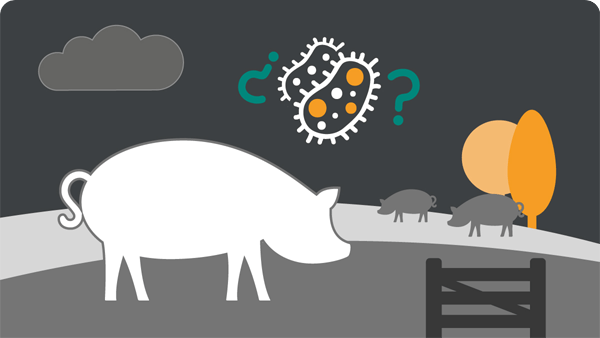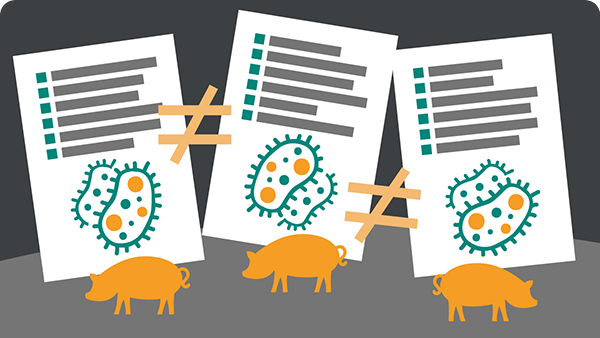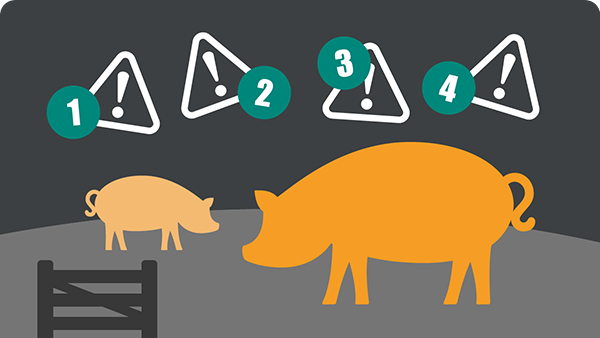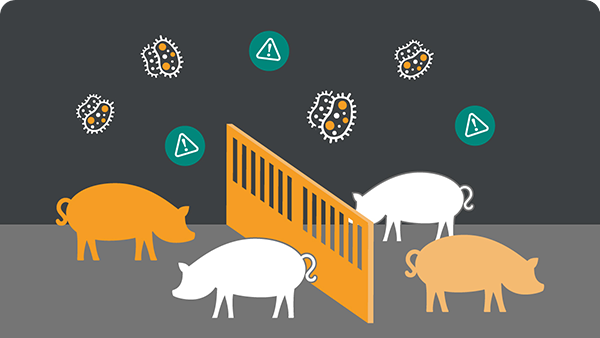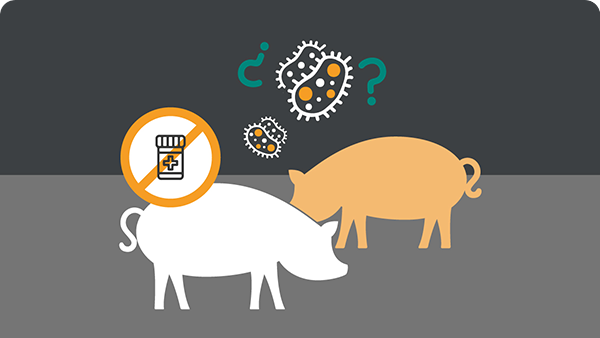
The disease
Pathogenesis of L. Intracellularis

Pathogenesis of L. Intracellularis
As an obligate intracellular bacterium, Lawsonia intracellularis has specific infection and spreading mechanisms in the host. The infection takes place through the oral route, and naïve pigs from different age groups are susceptible.
However, infection is usually seen in the late nursery period and in the growing-finishing phases. Sporadically, young adults (replacement animals) develop an acute haemorrhagic form of the disease.
There is no definitive explanation as to why some animals develop this acute form of the disease.
The infective dose is around 103 microorganisms (Collins et al., 2001), and the intestinal microbiota is essential for the development of the disease, as gnotobiotic pigs do not become infected when inoculated with a pure culture of L. intracellularis (McOrist et al., 1993).
Studies using a dual infection with PCV2 or Salmonella sp. (Opriessnig et al., 2011; Borewicz et al., 2015) associated with L. intracellularis in commercial pigs have been conducted, but no evident synergic effect was demonstrated.

The Disease

L. intracellularis is a gram-negative rod with a sigmoid or curved shape and with a single long flagellum.

Contact us
2 Giralda Farms
Madison, NJ 07940 United States
animal-health-communications@merck.com



